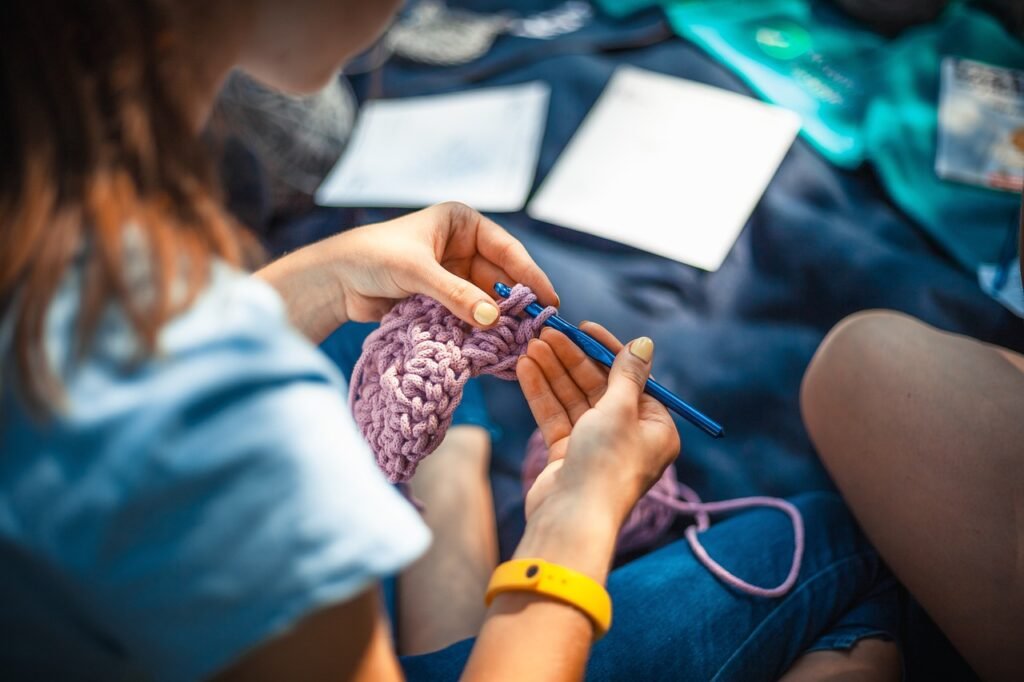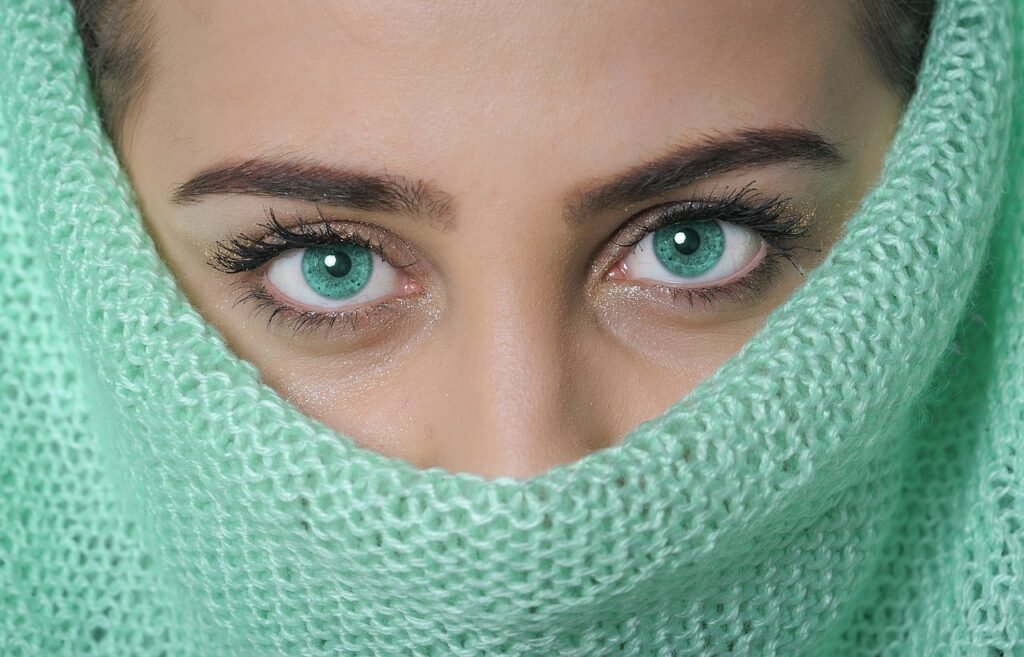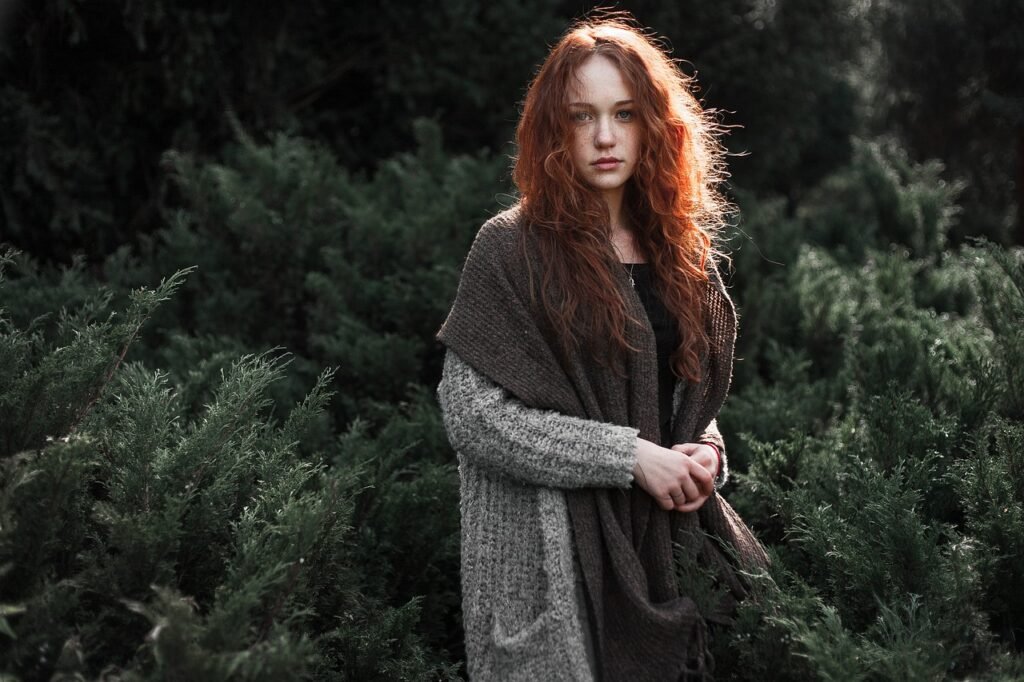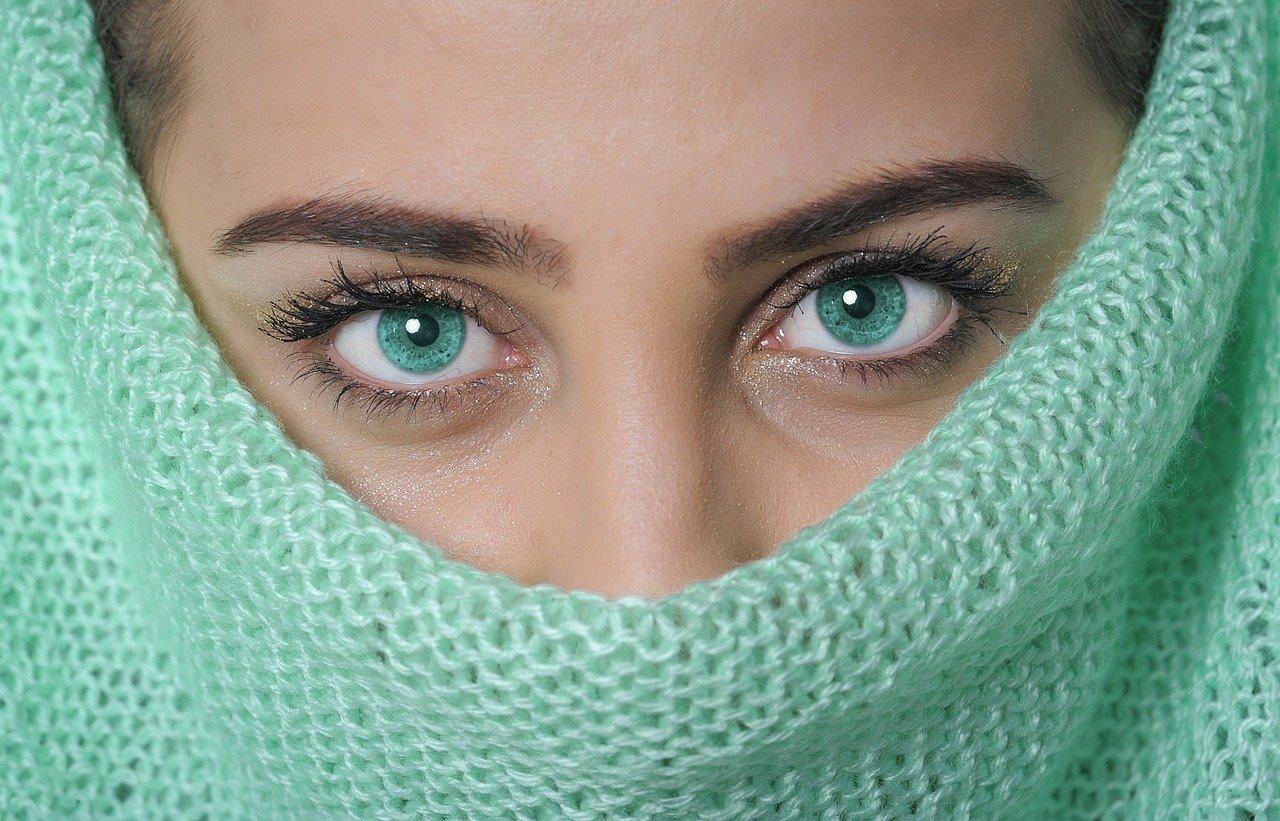Looking to start a new knitting project but not sure what to make with that vibrant and eye-catching self-striping yarn you’ve been eyeing? Look no further! This article will provide you with some valuable tips on how to select the perfect knitting project that will showcase the beautiful colors and patterns of your self-striping yarn. Whether you’re a beginner or an experienced knitter, these tips are sure to help you create a stunning and unique piece that you’ll be proud to show off. So grab your needles, unwind that skein of self-striping yarn, and let’s get started on your next knitting adventure!
Consider the yarn weight
When choosing a knitting project for self-striping yarn, one of the first factors to consider is the yarn weight. Yarn weight refers to the thickness of the yarn, and it plays a crucial role in determining the final outcome of your project. Before diving into any specific project, take a moment to check the recommended gauge on the yarn label.
The recommended gauge provides information on the number of stitches and rows per inch that the yarn is intended to be knit at. By matching the recommended gauge, you can ensure that your finished project will have the desired dimensions and fit. If the gauge is not followed, the garment may end up too tight or too loose.
Once you have determined the recommended gauge, choose a knitting project that matches it. For example, if the yarn suggests a gauge of 20 stitches and 24 rows per 4 inches, look for a pattern that specifies a similar gauge. This will help ensure that your project turns out as intended and that the self-striping pattern is showcased effectively.
Additionally, when considering the yarn weight, think about the drape and density you want for the finished project. Different yarn weights create different fabric textures and weights. For example, a bulky self-striping yarn will create a heavier and thicker fabric, perfect for cozy winter accessories. On the other hand, a lace or fingering weight self-striping yarn will produce a lighter and more delicate fabric, ideal for shawls or lightweight garments.
Think about the color repeats
One of the most attractive features of self-striping yarn is its color repeats. Color repeats refer to the length of each color segment within the yarn. When selecting a knitting project, it is essential to examine the length of these color repeats to understand how they will be distributed throughout your project.
Consider the effect of short, medium, or long color repeats on different projects. Short color repeats will create narrow stripes, while long color repeats will result in wider stripes. Medium color repeats offer a balanced effect somewhere in between. This variation allows you to choose a project that aligns with your preferred stripe width and overall aesthetic.
Furthermore, it is crucial to think about how the color changes will look on different stitch patterns. Some stitch patterns may accentuate the striping effect, while others may minimize it. For instance, a simple stockinette stitch will showcase the color shifts prominently, whereas a more complex stitch pattern like cables or lace may interrupt the flow of the stripes. Consider selecting a project that complements the self-striping yarn’s color repeats and allows them to shine.

Evaluate the pattern complexity
The pattern complexity is another aspect to consider when choosing a knitting project with self-striping yarn. Certain patterns may work better or worse with self-striping yarn, depending on the stitch pattern and construction complexity.
Choose a pattern that complements the self-striping yarn rather than competing with it. A simple and straightforward pattern will allow the colors of the yarn to take center stage. Avoid intricate stitch patterns that may distract from the self-striping effect or make the project look busy.
Additionally, consider the construction complexity of the pattern. Some projects, like seamless sweaters or intricate blankets, may require a lot of attention and careful color management. If you are new to working with self-striping yarn, it might be wise to start with a simpler project to familiarize yourself with handling the color changes.
It is also important to determine if the yarn color changes will enhance or distract from the pattern. Some self-striping yarns feature highly contrasting colors, and these may be better suited for simpler patterns that allow the stripes to speak for themselves. Conversely, if the self-striping yarn has more subtle color transitions, a more complex pattern may enhance the overall visual interest.
Consider the finished item size
Before embarking on a knitting project with self-striping yarn, it is crucial to consider the finished item size. Knowing the yardage of the self-striping yarn you have will help you choose a project that requires an appropriate amount of yarn.
Assess the yardage of the self-striping yarn and compare it to the yardage requirements of potential projects. Make sure you have enough yarn to complete the chosen project without running out. Remember to account for any additional yarn needed for swatching or for any modifications you may want to make.
Furthermore, consider the desired size and fit of the finished item. Some self-striping yarns are better suited for larger projects like sweaters or blankets, while others are more appropriate for smaller accessories like socks or hats. The self-striping pattern may look different or be less noticeable in larger projects, so keep this in mind when deciding on the project size.
Consider choosing a project that matches the amount of yarn you have and will result in the desired size and fit of the finished item.

Think about the yarn fiber content
The fiber content of self-striping yarn is an important consideration when selecting a knitting project. Different fibers have different characteristics and properties that will impact the look, feel, and care instructions of the finished project.
Consider the characteristics of the self-striping yarn’s fiber. Is it a natural fiber like wool or cotton, or a synthetic blend? Natural fibers often provide warmth and breathability, while synthetic fibers may offer durability and easy-care properties. Each fiber type has its advantages and disadvantages, so choose one that aligns with your preferences and the intended use of the finished item.
Choose a knitting project that complements the yarn’s fiber content. For example, a self-striping cotton yarn might be ideal for a lightweight summer top or a baby blanket, while a self-striping wool yarn would be perfect for a cozy hat or mittens.
Additionally, think about the care instructions for the finished project. Some fibers require special care, such as hand-washing or dry-cleaning, while others can be machine-washed and dried. Consider your lifestyle and the recipient’s preferences when deciding on the fiber content and care requirements of the project.
Take inspiration from existing patterns
If you’re not sure where to start with your self-striping yarn, take inspiration from existing knitting patterns. Browse knitting pattern websites or books and look specifically for designs created for self-striping yarn.
Patterns specifically created for self-striping yarn will often showcase the yarn’s unique color changes and striping effects. They will provide guidance on how to make the most of the self-striping yarn and ensure that your finished project looks stunning.
Alternatively, consider adapting a pattern to work with self-striping yarn. Many knitting patterns can be modified to incorporate self-striping yarn by adjusting the color changes or utilizing the self-striping yarn in specific sections. This allows you to add your personal touch to existing patterns and create something truly unique.

Consider the intended recipient
When selecting a knitting project with self-striping yarn, it is essential to consider the intended recipient. Thinking about their personal style and preferences will help you choose a project that they will truly love.
Consider their style and preferences when selecting a pattern and deciding on color choices. If they have a more minimalistic style, a simple and understated pattern with neutral or muted colored self-striping yarn might be more appropriate. If they prefer bold and vibrant colors, a pattern with bolder stripes or patterns might be a better fit.
Additionally, consider the season or occasion for the finished item. If the project is intended for winter, a self-striping yarn in cozy, warm colors might be a great choice. For a spring or summer project, consider lighter and brighter colored self-striping yarn.
Ultimately, choose a project that matches the recipient’s needs or interests, ensuring that they will appreciate and enjoy the finished item.
Experiment with different projects
Self-striping yarn is a versatile choice that allows you to explore various knitting projects. Don’t be afraid to experiment with different types of projects and knitting techniques.
Try different types of projects with self-striping yarn to see which ones you enjoy working with the most and which showcase the self-striping effect beautifully. Explore knitting techniques like colorwork or modular knitting to create unique and eye-catching pieces. These techniques can enhance the self-striping effect and add interest to your projects.
Challenge yourself with more complex knitting projects as you become more comfortable working with self-striping yarn. As you gain confidence and experience, you can tackle larger projects like garments or intricate lace shawls.
Consult knitting communities and experts
If you ever need advice or recommendations regarding knitting projects with self-striping yarn, don’t hesitate to consult knitting communities and experts.
Join knitting forums or groups where you can seek advice from experienced knitters. These communities are often filled with knowledgeable individuals who can provide valuable insights based on their own experiences.
Ask experienced knitters for project recommendations specific to the self-striping yarn you have. They might have suggestions for patterns that work particularly well or tips for handling the color changes effectively.
Consider attending knitting workshops or classes where you can receive guidance from experts in a more hands-on setting. In-person instruction can be a great way to enhance your skills and gain valuable insights into working with self-striping yarn.
Start with small projects
If you are new to working with self-striping yarn, it is often recommended to start with small projects. Choosing a small, quick project for your first venture with self-striping yarn will help you gain confidence and experience before tackling larger projects.
Experiment with socks, scarves, or hats, as these projects are often ideal for showcasing the self-striping effect. These smaller accessories allow you to practice working with self-striping yarn’s color changes in a manageable and rewarding way.
As you become more comfortable with self-striping yarn and its unique properties, you can gradually move on to larger projects like sweaters or blankets. Starting small allows you to build your skills and understanding of how self-striping yarn behaves, enabling you to create more intricate and ambitious projects in the future.
In conclusion, choosing the right knitting project for self-striping yarn involves considering various factors such as yarn weight, color repeats, pattern complexity, finished item size, yarn fiber content, the recipient’s preferences, and even experimenting with different projects. By carefully evaluating these factors and taking inspiration from existing patterns, consulting knitting communities and experts, and starting with small projects, you can make informed decisions and create stunning knitted items with self-striping yarn. So dive in, get creative, and enjoy the journey of working with self-striping yarn!

